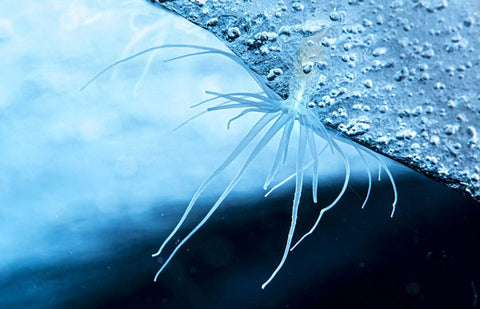Welcome to our exploration of anemones and their remarkable ability to reproduce asexually. In this blog post, we look at their biology and reproductive strategies.
It's time to shed light on how they manage propagate without the need for a partner and how do they reproduce asexually!
What are anemones, and when were they discovered?
Anemones are marine animals belonging to the phylum Cnidaria, known for their striking appearance and predatory behavior.

The name "anemone" is derived from the Greek word "anemos," meaning wind, as their swaying tentacles resemble the movement of seaweed in the current. Anemones have been documented since ancient times, with references dating back to Greek and Roman mythology. However, they were formally classified by scientists in the 18th century.
Where in the world can you find anemones, and how many different species are there?
Anemones inhabit oceans worldwide, from shallow coastal waters to the deep sea, and can be found in a variety of marine environments, including coral reefs, rocky shores, iced waters, and sandy bottoms.

LAURENT BALLESTA
There are over 1,000 known species of anemones, ranging in size from less than an inch to several feet in diameter.
The largest anemone ever found measured over six feet in diameter, discovered off the coast of Antarctica!
How do anemones reproduce, and what is asexual reproduction?
Anemones reproduce through both sexual and asexual means, with asexual reproduction being a common strategy for many species.
Asexual reproduction in anemones typically involves a process called "fission," where the anemone splits itself in half to produce two genetically identical clones. This process allows anemones to rapidly increase their numbers and colonize new habitats without the need for a mate.

In optimal conditions with abundant food, suitable habitat, and favorable environmental factors, anemones may undergo fission multiple times within a single year. This could range from several times to as many as half a dozen or more fission events in a year for some species, particularly those with rapid growth rates and high reproductive capacities!
What is the mechanism behind anemones' ability to split in half through asexual reproduction?
At the base of the anemone's body is a specialized structure called the pedal disk, which anchors the animal to the substrate. During fission, the anemone's pedal disk elongates and divides into two separate disks, each with a portion of the original animal's body attached. The anemone then regenerates missing body parts, such as tentacles and oral discs, to complete the formation of two genetically identical clones.
In general, the fission process typically takes several hours to several days to complete. In general, anemones are capable of feeding relatively soon after fission, once they have completed the process of regenerating any missing body parts and reestablished their normal metabolic processes. Again this can range from a few hours to a few days.
It is fair to say that anemones are intriguing creatures with a remarkable ability to reproduce asexually through processes like fission. Let's take a minute to marvel at the ingenuity of creatures like anemones and their extraordinary adaptations for survival, and if you love these beautiful dancing flowers of the deep, head on to our biology plate section and gift yourself the Royale Maps Anemone Print!



